Seeing abandoned puppies is not something uncommon for most people, but one never thinks just how or what could have made certain people just leave them in the middle of nowhere.
What’s even worse is seeing just how loyal they are to their owners when they wait for them to return, but they never do. It’s truly heartbreaking.
In this story, we will talk about a small puppy who was abandoned on Easter and left in front of a big supermarket.
Abandoned On Easter
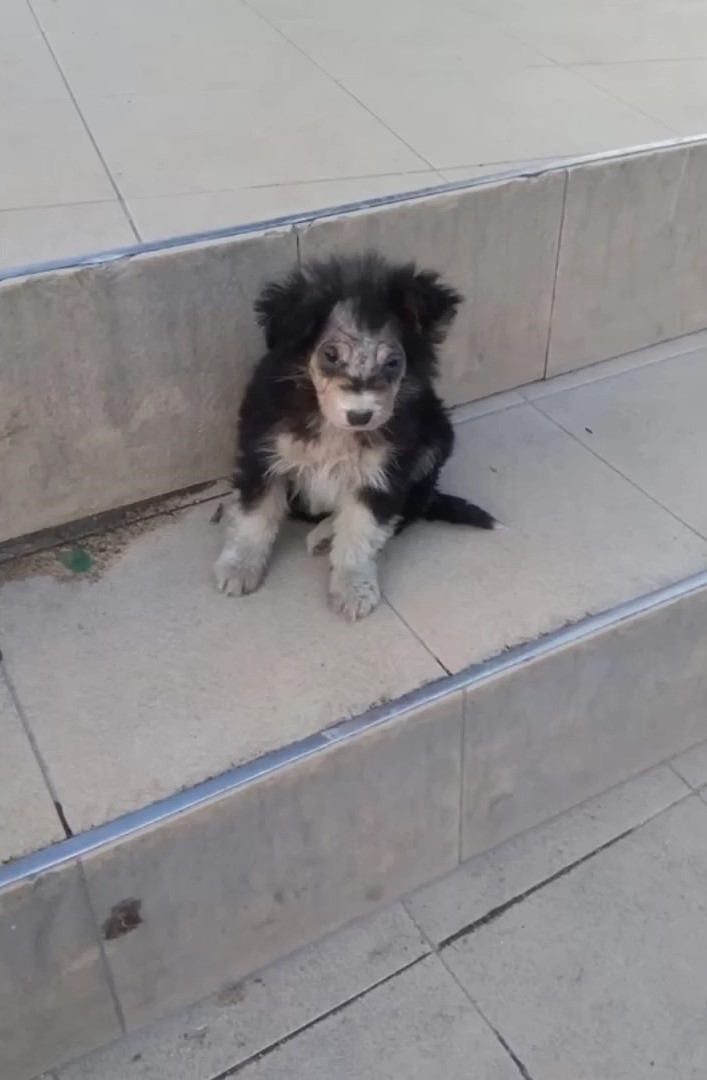
When this poor puppy was abandoned by her owner when she needed him the most, she was just so heartbroken.
To make matters worse, she stood near a supermarket, politely asking for help and everybody just ignored her.
However, all that changed when a kind rescuer saw her misfortune and felt bad for her. She stopped and noticed that the puppy was very friendly.
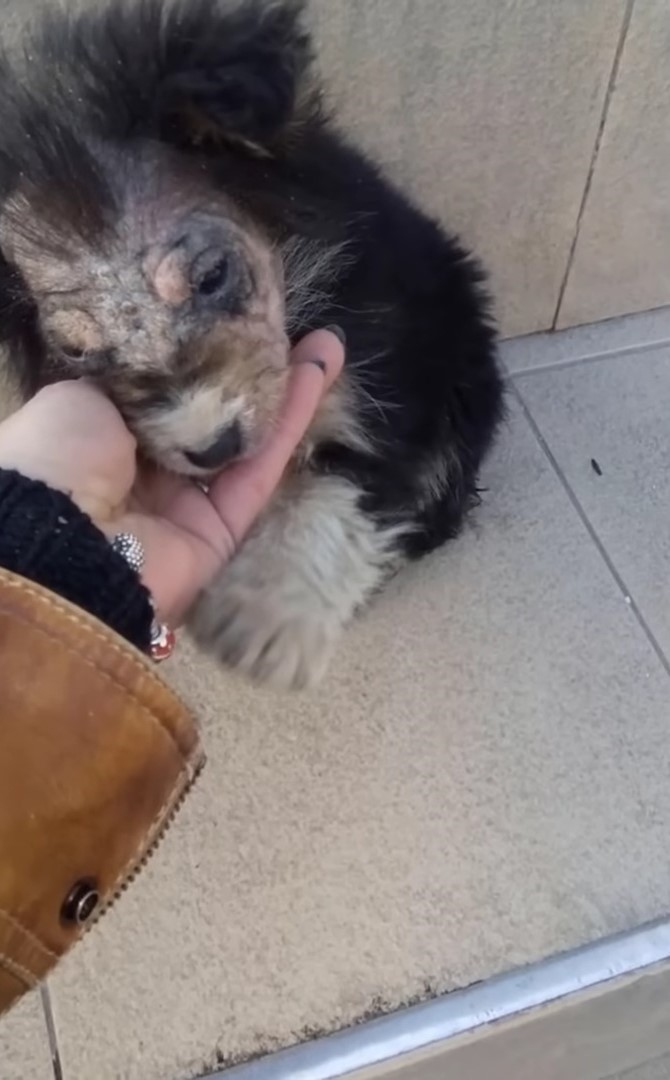
It’s truly heartbreaking to think what she must have gone through in such a short time. She even looked malnourished and had some skin problems.
The rescuer took her back home and named her Aurora. She gave her food, water, and a warm blanket so she could curl up in it and take a nap.
She was given a warm bath, and then her rescuer placed her in a comfortable bed with her brand-new blanket.
Aurora Is Making Changes
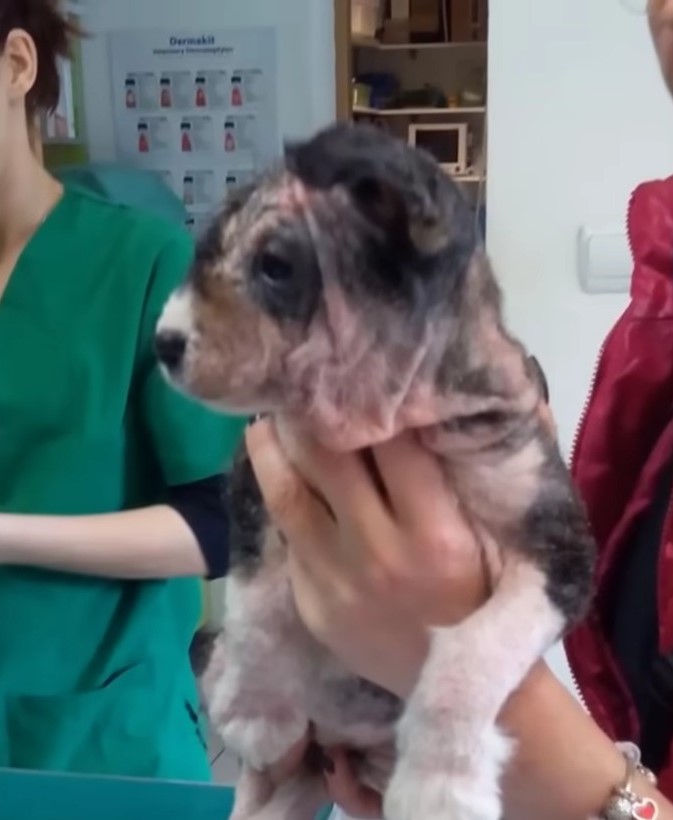
The very next day, she was taken to a veterinarian so they could see what was wrong with Aurora.
While the checkup was a bit longer, it revealed nothing dangerous. She was dewormed by the vets, and they recommended several more remedies to help improve her health.
She will continue taking antibiotics, body cream, and vitamins for immunity, and she also needs to remain on a proper diet.
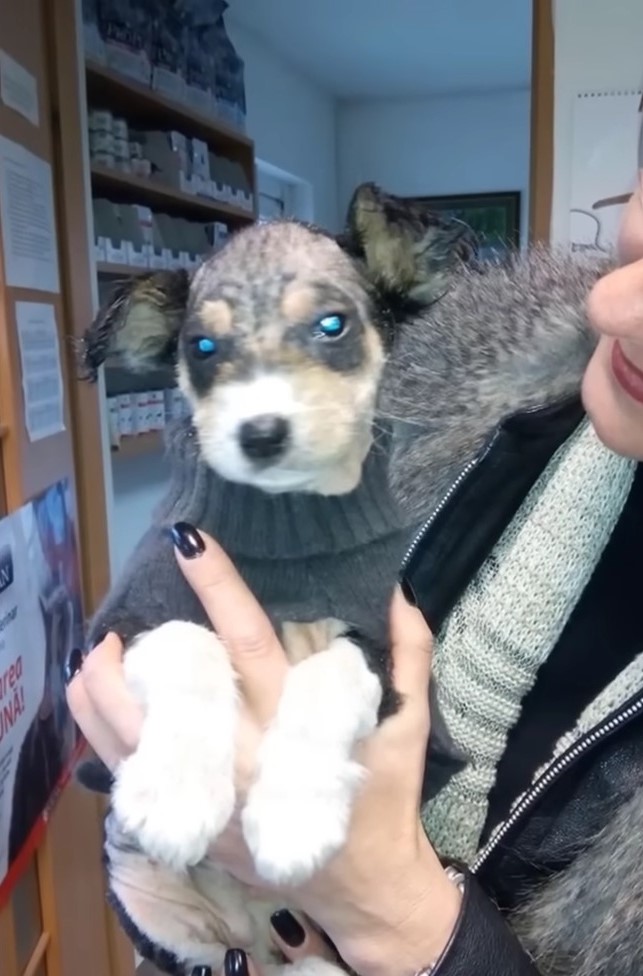
Fortunately, she doesn’t have any serious health issues, and all of her problems can be remedied with medication and time.
Later checkups at the vet revealed that she was making a slow recovery and would still need to continue her treatment regularly.
After a little over 2 weeks, Aurora has become really energetic and her fur has grown back normally now. She has also stopped taking antibiotics.
Start Of A New Life
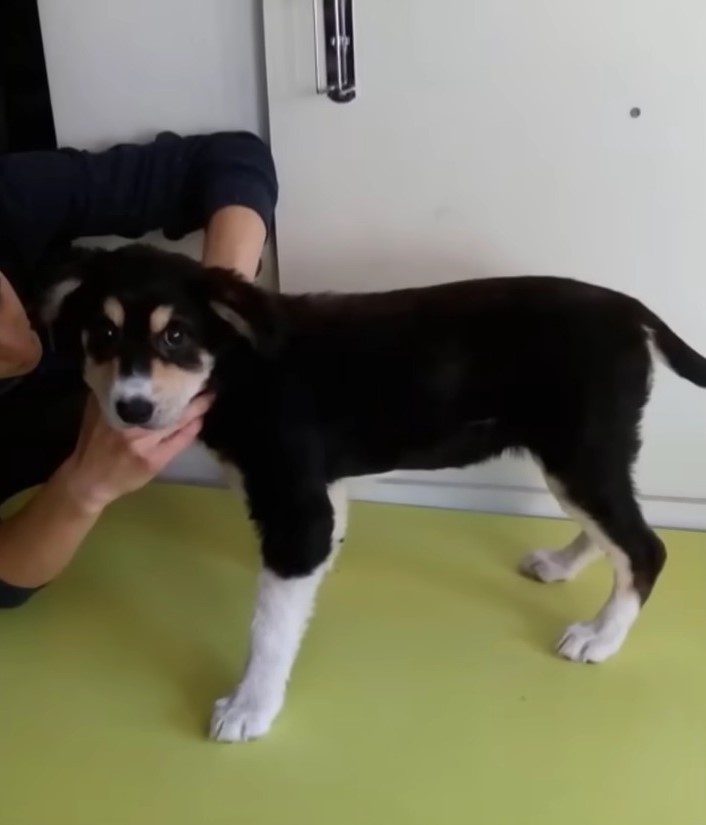
On their third visit to the clinic, they gave her vaccinations and noted that her weight was improving. She was making amazing progress.
Everything seemed better. With each passing day, Aurora has been doing better and better. Her mood has improved, and she has become quite playful.
Her rescuer makes sure that she goes on walks and enjoys herself. She even met some new friends along the way.
As time flew by, Aurora enjoyed the time she had with her special rescuer, but it was soon time to find her a new home.
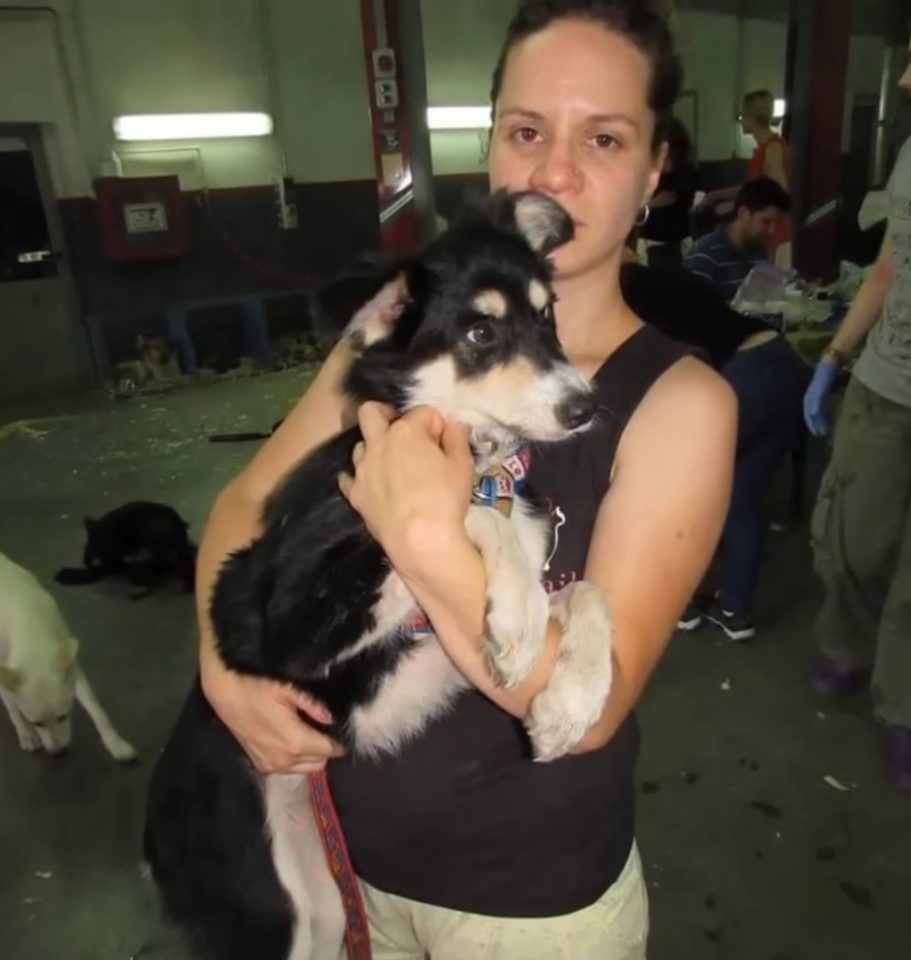
This was the hardest part, as every rescuer forms such a strong bond with the puppies they rescue, but there always comes a day when things have to change.
Aurora’s rescuer knows that she is better off with someone else, so she finds her an wonderful family.
She is so happy that everything turned out so well for her and that she is now living her best life in a new home.
Ever noticed your furry friend scooting their bottom across the floor and wondered what’s behind this peculiar behavior? It’s not the most glamorous topic, but dogs dragging their butts, also known as scooting, is a common sight that can leave pet owners both puzzled and amused. As a seasoned dog enthusiast, you’re no stranger to the quirky antics our canine companions can display.
You’ve probably chuckled at your dog’s playful antics or marveled at their unwavering loyalty, but the sight of them dragging their rear end may have left you scratching your head. While it may seem comical on the surface, this behavior could be a sign of an underlying issue that warrants attention. So, why do dogs engage in this seemingly odd behavior? Let’s dig a little deeper into this peculiar habit and uncover the reasons behind it.
Understanding the Behavior: Why Do Dogs Drag Their Butts
Identifying the Reasons Behind Scooting
When dogs drag their butts along the ground, it may seem funny at first, but it’s essential to understand that this behavior is often a sign of an issue that needs attention. One common reason for scooting is anal gland problems. Dogs have scent glands located near their anus that can become impacted or infected, causing discomfort and the urge to scoot to alleviate it.
Another reason dogs may scoot is due to worms. Intestinal parasites like tapeworms can cause irritation around the anus, leading to scooting. Regular deworming and keeping your dog’s environment clean can help prevent this issue.
The Anatomy of a Dog’s Rear End
To understand why dogs drag their butts, it’s crucial to grasp the anatomy of their rear end. The anal sacs or glands are small pouches located on either side of the anus. These glands secrete a smelly substance that helps dogs mark their territory. Problems arise when these glands get blocked or infected, leading to discomfort and scooting behavior.
Additionally, the fur around a dog’s rear end can trap fecal matter, leading to irritation and the desire to scoot to alleviate the discomfort. Keeping your dog’s hindquarters clean and well-groomed can help prevent this issue.
Common Causes of Butt Dragging in Dogs
Anal Sac Issues
Anal sac issues are a common reason why dogs may drag their butts. These sacs, located on either side of the anus, can get impacted or infected. When this happens, it can be painful for your furry friend, leading to scooting behavior. Regularly checking and expressing your dog’s anal glands can help prevent these problems.
Intestinal Parasites
Intestinal parasites, such as worms, can cause irritation and discomfort in your dog’s rear end, prompting them to drag their butts. Regular deworming treatments as recommended by your vet can help keep these parasites at bay and prevent this behavior.
Allergies and Skin Irritations
Allergies and skin irritations can also contribute to butt dragging in dogs. Itching and irritation in the anal area may lead to scooting as your dog tries to alleviate the discomfort. Identifying and addressing the underlying cause of the allergies or skin issues can help stop this behavior.
Overweight and Other Health Concerns
Being overweight or having other health concerns can also result in butt dragging in dogs. Excess weight can put pressure on the anal area, causing discomfort and prompting scooting. Maintaining a healthy weight through proper diet and exercise can help prevent this behavior. Regular veterinary check-ups are essential to address any other potential health issues that could be causing butt dragging in your dog.
Diagnosing the Problem
When to Visit the Vet
If you notice your dog scooting more frequently, it’s time to visit the vet. Persistent scooting can indicate underlying health issues that need professional attention. Don’t delay a visit if you observe this behavior regularly.
What to Expect During the Examination
During the vet visit, your dog will undergo a thorough examination. The vet may check the anal sacs, look for signs of worms or skin irritations, and evaluate your dog’s overall health. Be prepared for possible treatments or further tests based on the vet’s findings.
Treatment Options for Scooting Dogs
Expressing Anal Glands
If your dog is scooting due to anal sac issues, the vet may recommend expressing the anal glands. This procedure involves manually emptying the glands to alleviate discomfort and prevent further scooting. It’s essential to follow the vet’s instructions carefully to ensure proper gland expression without causing harm to your furry friend.
Medications and Parasite Control
In cases where parasites are causing your dog to scoot, the vet might prescribe medications to eliminate the infestation. Additionally, parasite control measures may be recommended to prevent future infestations. It’s crucial to administer any prescribed medications as directed and maintain a clean environment to keep parasites at bay.
Dietary Changes and Weight Management
For dogs scooting due to weight concerns or dietary issues, the vet may suggest dietary changes or a weight management plan. Adjusting your dog’s diet to a healthier option and managing their weight can help alleviate the scooting behavior. Follow the vet’s recommendations regarding portion sizes, feeding frequency, and suitable food choices to promote your dog’s overall well-being.
Surgical Interventions
In severe cases where other treatments have not been effective, surgical interventions may be considered. Surgical procedures for conditions contributing to scooting, such as correcting anal sac issues or addressing skin abnormalities, may be recommended by the vet. It’s important to discuss the risks, benefits, and aftercare requirements of any surgical intervention with your vet to make an informed decision for your pet’s health.
Preventative Measures to Stop Butt Dragging
Regular Grooming and Hygiene
Keeping your dog clean and well-groomed is essential to prevent butt dragging. Regularly washing your dog’s hind area helps to reduce the risk of anal sac issues and discomfort. Grooming can also help spot any signs of irritation or infection early on, allowing for prompt treatment.
Diet and Exercise for Optimal Health
A balanced diet and regular exercise are key factors in maintaining your dog’s overall health, which can help prevent butt dragging. Ensure your furry friend receives a nutritionally balanced diet to support digestive health and weight management. Regular exercise keeps your dog fit and helps prevent obesity-related issues that could lead to scooting behavior.
Routine Veterinary Check-Ups
Scheduling routine check-ups with your veterinarian is crucial in preventing and addressing any underlying issues that may contribute to butt dragging. Your vet can examine your dog’s anal glands, check for parasites, and discuss any dietary adjustments or treatment plans necessary. Regular vet visits ensure early detection of potential health concerns and promote your dog’s well-being.
Remember, proactive care and attention to your dog’s hygiene, health, and regular vet visits are key in preventing butt dragging and maintaining your furry companion’s overall happiness and well-being.
Conclusion
Taking care of your furry friend involves more than just cuddles and playtime. Understanding why dogs drag their butts is essential for maintaining their health and happiness. By being proactive with grooming, keeping an eye on their diet, and visiting the vet regularly, you can help prevent uncomfortable scooting episodes. Remember, your pup relies on you to keep them feeling their best, so stay informed and attentive to their needs. With a little extra care and attention, you can ensure your dog’s butt stays where it belongs – wagging happily along with the rest of them.
Frequently Asked Questions
Why do dogs drag their butts?
Dogs drag their butts, known as scooting, due to issues like anal sac problems, parasites, allergies, and weight concerns.
How can I prevent my dog from scooting?
Prevent butt dragging by focusing on regular grooming, hygiene practices, balanced diet, exercise, and routine vet check-ups.
What can I do to maintain my dog’s overall well-being?
Maintain your dog’s well-being through proactive care, attention to hygiene, health, and regular vet visits for early issue detection and prevention.
[no_toc]

Hey there, I’m Janet Brooks, a dog-loving student from California. I’m all about helping pups in need, especially those without homes. Me and my awesome friends work together to give shelter and love to stray dogs. Oh, and I also write blogs about dogs to share helpful info.